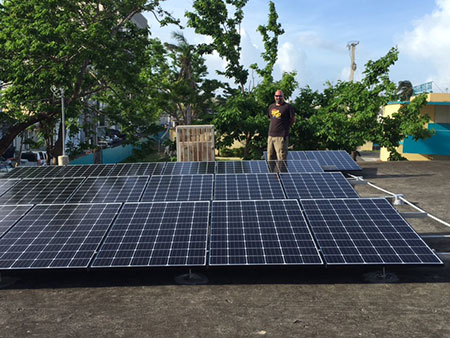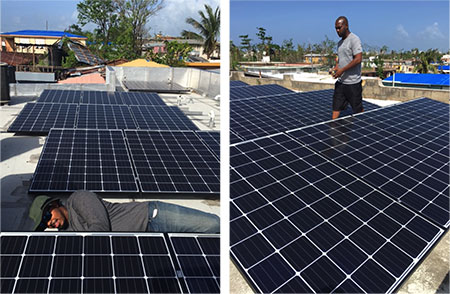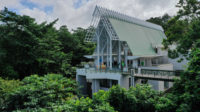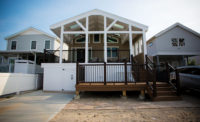On October 22, the Buena Vista community center in San Juan, Puerto Rico, switched off one of the many noisy generators that has become an inescapable part of life since Hurricane Maria devastated the country on September 20. For the first time in weeks, fans turned through the blessed silence. A refrigerator hummed and lights glowed.
This small miracle in an island staggering to recover was powered by a 5-kilowatt photovoltaic solar array. It was the first installation by an ambitious nonprofit called Resilient Power Puerto Rico that aims to rapidly restore electrical service by installing permanent solar arrays on the island, which lost almost its entire grid to the hurricane. Full restoration of the electrical system could take years.
Puerto Rico’s economy was spiraling downward before the storm, a plight largely ignored by Congress and the rest of the U.S. The local power company, PREPA, which had discouraged solar and largely depended, on costly imported oil, declared bankruptcy in July.
Resilient Power Puerto Rico launched only a week after the hurricane, when the full extent of the tragedy became evident. Its principals are architect Jonathan Marvel, urban designer Walter Meyer, landscape architect Jennifer Bolstad, and attorney Christina Roig. Though all are New Yorkers, each has close ties to the island.
The partners are targeting community facilities including health clinics, food kitchens, and nonprofit service providers, to increase each installation’s impact. The group raised $150,000 in days, permitting rapid deployment of solar panel and battery pack kits to the island.

Photo courtesy Jonathan J. Marvel
At least five PV arrays are now in place, and the organization is ramping-up fundraising and training to bring 100 sites all over the island online in 100 days, according to Meyer, a co-founder with Bolstad of Local Office Landscape and Urban Design. To attract larger funders, “We had to take the fear factor out,” by showing they could deliver the installations quickly, said Marvel, principal of Marvel Architects, which has offices in Manhattan and San Juan.
This plan was not unprecedented: In 2012, Meyer directed the installation of solar generators at neighborhood facilities in the Rockaways, an ocean-side community of New York hard hit by Hurricane Sandy.
Community centers in Puerto Rico, such as the long-established Buena Vista in the Caño Martín Peña area of San Juan, play a critical role in storm recovery. Each serves from 20,000 to 50,000 people. Volunteers share information, help storm victims apply for aid, and give out tarps, food, medicines, and other necessities.

Buena Vista PV array, photo courtesy Jonathan Marvel
The PV arrays charge phones and operate computers, water purifiers (since all the reservoirs are polluted), and refrigerators that store medicines and make ice. With battery packs supplied, “the centers can operate on three shifts if they want,” said Meyer, since volunteers are abundant.
The sun-drenched climate makes the island a perfect candidate for PV at large scale. People are being trained to mount the arrays atop the flat concrete roofs that top most nonresidential buildings. The arrays can resist 150 MPH winds, according to Marvel.
With donated labor and materials acquired at cost, the 5-kW solar arrays installed by Resilient Power Puerto Rico, cost around $25,000 each, less than half their retail value.
Meyer and Marvel expect the development of solar hubs to grow rapidly, linked together to form microgrids that could mix solar with other renewable sources. The road to energy independence could be a source of skilled jobs—sorely lacking before the storm—as well as a clean-energy alternative that can survive future hurricanes.
“When they see the installations on the community centers,” said Marvel, “people will say, ‘I could have that.’ ”
To learn more or donate, visit ResilientPowerPR.org.






Post a comment to this article
Report Abusive Comment